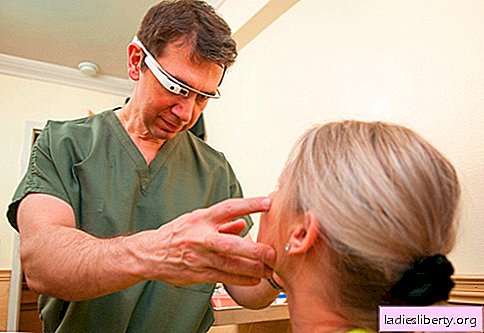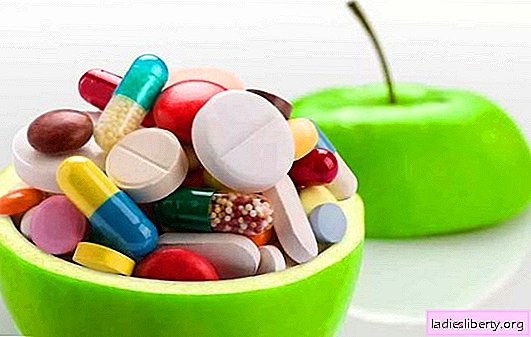
The birth of a child completely rebuilds the female body.
Experienced mothers are sure to take with them to the hospital a package of special hygiene products that will be useful after delivery.
Why do you need pads after childbirth and how to use them?
Why do I need pads after childbirth
Postpartum hygiene includes not only breast care, but also the external genitalia. Immediately after the baby is born, characteristic bloody discharge begins, which is called Lochia. Normally, they continue until the fortieth day after delivery. During this period, the nature of the discharge changes.
The specifics of the loch is that two days of heavy discharge can be replaced by two days of a hollow absence of bleeding. Then, the discharge resumes, and in the first days after the baby is born, they are actually very plentiful. There is an intensive clarification of the uterus. A young mother can detect in the pad not only liquid, but also clots, lumps of torn tissue. No need to be afraid: this is normal. Nevertheless, gynecologists in the hospital carefully monitor the condition of the woman so as not to miss the pathological uterine bleeding.
Gradually, the discharge becomes more scarce, their color changes to pale. Allocations become more and more similar to ordinary, but protracted menstruation. In some cases, strong discharge can continue up to the 30th day from the moment of birth. After the restoration of the uterus, the lochia gradually grow thinner and stop.
However, immediately after the birth of the baby, a woman needs serious hygiene protection: conventional gaskets will not help here. We need special pads after childbirth. Which is better to use depends on the intensity of the bleeding and the budget. Some gaskets are more expensive, some cheaper.
In any case, care should be taken in advance of hygiene, so as not to be in a difficult situation in the hospital. It is best to play it safe and put the delivery bag at least two packs: at first you will have to change the pads almost every 2-3 hours.
What is the difference between pads after childbirth from conventional hygienic
The question arises: why not buy regular gaskets? The fact is that even a night maxi-size is not enough to provide protection. Postpartum hygiene products are large in size. They are able to absorb a large amount of liquid simultaneously and hold up to 900 ml of liquid secretions. This leaves excess blood, which previously ensured the viability of the fetus.
In addition, pads after childbirth as a means of protection prevent inflammation and infection through the vagina in the first, most difficult postpartum days. Many special gaskets are labeled "sterile": it is these funds that you should take with you to the maternity hospital. This is especially important when tearing the perineum. Sterile pads will reliably protect against the multiplication of pathogenic microflora, for which the blood is rejected is an excellent nutrient medium. Sometimes manufacturers additionally impregnate the surface with bactericidal substances.
Among other differences:
• breathable structure of absorbent material, which provides oxygen flow and promotes the healing of joints;
• A special natural filler that better absorbs copious fluids. In postpartum pads, materials are used that can perfectly absorb not only liquid, but also clots;
• soft material in contact with the skin, which does not irritate, does not stick to wounds, does not cause allergies;
• anatomical shape provides maximum comfort.
You can buy special pads at the pharmacy. Young mothers have many questions, including those related to pads after childbirth: which ones are better to use, how often to change, etc. Pay attention to the fact that on postpartum hygiene products the usual "droplets" absorbent properties are indicated. You can buy, for example, one or two packs of the largest possible products and one or two medium-sized absorbents.
How to use pads after childbirth
When a woman breastfeeds a newborn, the uterus contracts and the discharge can be very, very plentiful. When the baby is sleeping, and the mother is resting lying down, there is almost no discharge. But as soon as a woman stands up, a large portion of a liquid is instantly released. You need to be prepared for this.
If there is no adhesive base on the panty liners after childbirth (as on obsolete hygiene products of the last century), this entire portion can pass by the protective agent and cause many problems. Therefore, in the first days, you need to give preference to very large gaskets, preferably with a side groove and wings, and always with a strong latch on the linen.
Which is better to use after-delivery pads? It is desirable that they have the largest possible size. Small postpartum pads will have to be changed every 20-30 minutes, which is extremely inconvenient. Women can have delivery differently: some women in labor experience severe pain for five days. A constant change of gaskets will cause great discomfort in this case.
On sale there are postpartum hygiene products manufactured in Germany, Poland, Russia. They indicate characteristics that may be useful. And yet, the most-most must be taken to the hospital: no one can predict in advance how the body will react, how plentiful the discharge will be.
There are women who already on the first day after giving birth use the usual “maxi” for critical days, and this is enough. But in this case, there is an important nuance: the gasket should not have a synthetic mesh on an absorbent surface. It can stick to fresh wounds on the external genitalia and cause additional pain.
It is best to spend money on gynecological postpartum hygiene products. If a woman brought along special pads after childbirth, how often should she change them? After visiting the toilet - it is mandatory, but otherwise no later than three hours after the previous replacement. Be sure to change the pads before a night's rest and after morning awakening.
In order not to injure yourself and not to cause an infection, be sure to wash your hands before changing the gasket. Then it is necessary to very carefully separate the absorbent surface from the body, in order to avoid sharp pain and damage to the seams with possible bonding of the pad.
Already by discharge you can see that the amount of discharge has become less. After the young mother and the newborn are at home, the vaginal injuries will become much smaller, the skin will calm down, and there will not be much point in sterility. Maybe from the fifth to sixth day after the birth it will be possible to switch to ordinary sanitary pads for critical days.
Can I replace pads after childbirth with urological pads?
For the first time faced with the need to take care of postpartum hygiene products, it is just right to get confused. Moreover, in the pharmacy, the pharmacist can offer urological pads. Can I use them? When there is a choice between urological hygiene products and pads after childbirth, which ones are better to use?
The specificity of the former is that they are designed to solve the problem of urinary incontinence in adults, and therefore are designed to absorb a large amount of liquid. The urological pad is also able to absorb and retain almost a liter of urine.
The difference in filling. If cellulose is used for gynecological purposes, then a special sorbent is used for urological purposes, which, when it comes into contact with the liquid, turns into a gel. The gel-like substance absorbs unpleasant odors, does not allow pathogenic microflora to multiply.
Gynecological pads absorb bloody discharge at the point of contact with the surface and hold it there. The gel layer of urological agents evenly distributes the liquid throughout the entire area of the pad.
They have a no less soft surface, not irritating to the skin and mucous membranes. That is why in the first two days after delivery, urological pads can successfully replace special postpartum ones. In addition, in some women, the urine retention process is impaired, as the tone of the muscles of the pelvic day weakens.
In any case, a woman should take with herself a special, reliable, safe means of protection against secretions in the hospital.











